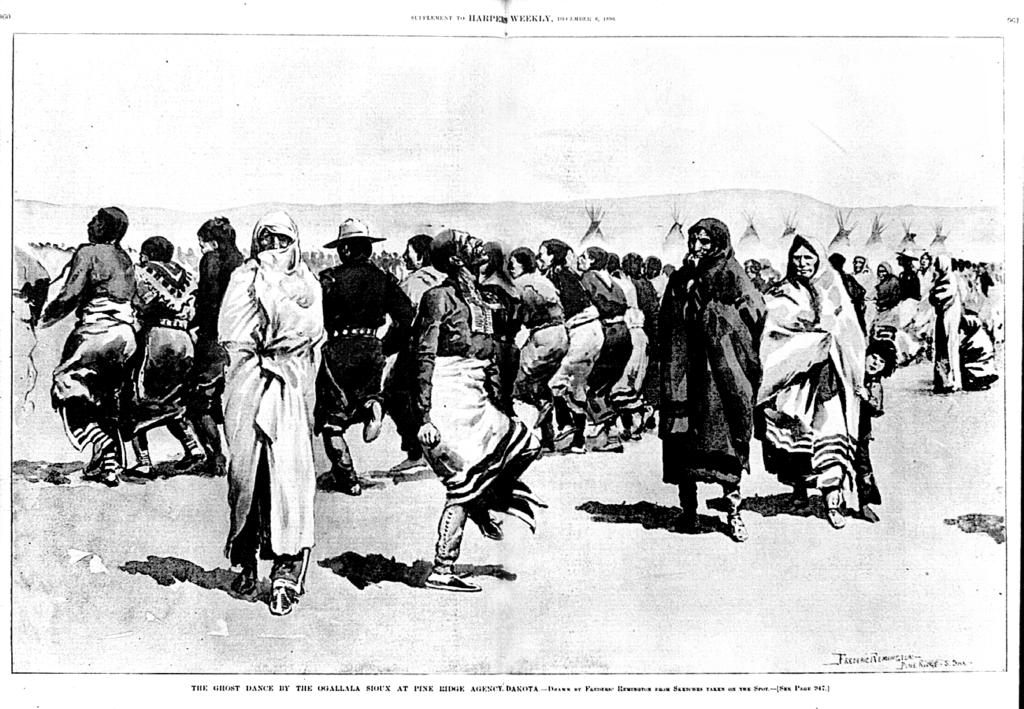 You may know that the word “ghost” means the image of a dead person who can be seen by the living.
You may know that the word “ghost” means the image of a dead person who can be seen by the living.
When I was a kid, people would sometimes tell “ghost stories” about scary (frightening) places, such as haunted houses, where ghosts were said to live.
I didn’t believe in ghosts, really. But some people do, and take that belief very seriously.
An example from American history is the “Ghost Dance,” a religious movement (people working together to create or advance an idea) popular among some Native American (American Indian) tribes (cultural groups) in the late 1800s.
The Ghost Dance was begun in 1890 by a man named Wovoka. He was a Native American religious leader from the Northern Piute tribe, found largely in Nevada, the state next to California (and home of Las Vegas).
Wovoka, also known as Jack Wilson, was said to be a prophet (person who can tell others the meaning of messages from God).
Some tribal members thought Wovoka could interpret (explain the meaning of) mysterious (unknown; strange) visions (seeing of something not there or related to the future) directly from God.
Wovoka said that he saw visions many times in his life. But it wasn’t until he got older that he learned to interpret them.
On January 1, 1889, when he was 33 years old, Wovoka said he saw an important vision.
He said that God showed him a place where the Native American people lived in peace (without war or conflict) with whites (Caucasian men and women).
God, he said, gave him the Ghost Dance, a religious dance performed in a circle.
Wovoka said God told him to take the dance back to his people. By including the dance in their religious ceremonies, according to Wovoka’s vision, they would help wipe out (eliminate) evil (forces causing bad things to happen) from the world and fill the world with food, love, and faith (belief in God).
As news of Wovoka’s vision spread (became known to many people), many different tribes in the United States sent representatives to find out more about Wovoka and what he claimed (said was true but without proof) to have seen.
Learning about the Ghost Dance, many tribes incorporated it into (started to use it in) their own religious practices (regular behaviors and actions).
However, there were other tribes that did not accept and believe in this concept (idea) and dismissed (did not accept) it altogether (completely).
Wovoka’s dream of whites and American Indians living peacefully together was never truly realized (didn’t happen), at least not the way Wovoka thought it would.
Still today, there are some American Indian tribes that use the dance in their ceremonies.
~Jeff
P.S. This story of Wovoka comes in part from our Cultural English lesson 510. To get more lessons about American culture and history, try our Unlimited English Membership.
P.P.S. Like this short English lesson? Get a FREE sample lesson (no money needed) – SIGN UP BELOW!
Just fill out the form below and we’ll send a FREE lesson to try!
We hate spam, too! We will never sell, rent, or give your information to anyone – ever!
What Will I Learn in My Free Lesson?
Here is just a small part of what you’re going to learn in this free lesson:
- What “take a rain check” means and how to use it in a conversation . . .
- The difference between a “recluse” and a “busybody” . . .
- Why “to fend OFF” means something from “to fend FOR” . . .
- What it means to “take a rain check,” “keep to yourself,” and “to appoint (someone)” . . .
- What a social secretary is . . .
- The best way to use “to sort out” and “to turn down” . . .
- How to use phrasal verbs like “to settle in” and “to settle down” (they’re not the same!) . . .